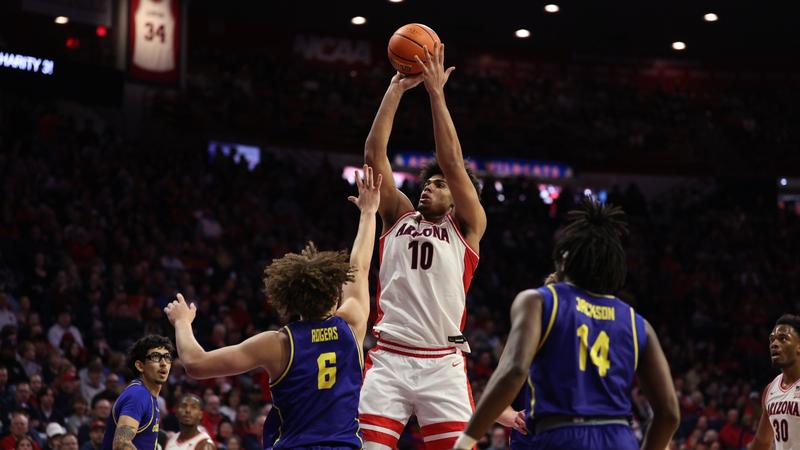Introduction;
On 23rd April 2025, India unilaterally announced holding the Indus Waters Treaty (IWT) in abeyance, stating that the treaty would remain in abeyance…

Introduction;
On 23rd April 2025, India unilaterally announced holding the Indus Waters Treaty (IWT) in abeyance, stating that the treaty would remain in abeyance…

I’ve been reporting from the ground for five years. I’ve covered elections, protests, accidents, communal violence and the environment. I’ve waited outside police stations and hospitals, slept on station floors, travelled overnight to…
Bray, F. et al. Global cancer statistics 2018: Globocan estimates of incidence and mortality worldwide for 36 cancers in 185 countries. CA Cancer J. Clin.68(6), 394–424 (2018).
Skaane, P. et al. Randomized trial of screen-film versus full-field digital mammography with soft-copy reading in population-based screening program: follow-up anstilld final results of Oslo II study. Radiology244(3), 708–717 (2007).
Carney, P. A. et al. Individual and combined effects of age, breast density, and hormone replacement therapy use on the accuracy of screening mammography. Ann. Intern. Med.138(3), 168–175 (2003).
Lord, S. et al. A systematic review of the effectiveness of magnetic resonance imaging (MRI) as an addition to mammography and ultrasound in screening young women at high risk of breast cancer. Eur. J. Cancer43(13), 1905–1917 (2007).
Al-Foheidi, M. et al. Breast cancer screening: review of benefits and harms, and recommendations for developing and low-income countries. Med. Oncol.30, 1–15 (2013).
Ghosh, R. Performance investigation of dual trench split-control-gate MOSFET as hydrogen gas sensor: A catalytic metal gate approach. IEEE Sensors Letters7(5), 1–4 (2023).
Park, J.-T. & Colinge, J.-P. Multiple-gate SOI MOSFETs: device design guidelines. IEEE Trans. Electron Devices49(12), 2222–2229 (2002).
Ghosh, R. et al. Sensitivity analysis of bi-metal stacked-gate-oxide hetero-juncture tunnel fet with Si\(_{0.6}\)Ge\(_{0.4}\) source biosensor considering non-ideal factors. PLoS ONE19(6), e0301479 (2024).
Shreya, S. et al. Core-shell junctionless nanotube tunnel field effect transistor: Design and sensitivity analysis for biosensing application. IEEE Sens. J.20(2), 672–679 (2019).
Ghosh, R. et al. Investigation of gate-engineered heterostructure tunnel field effect transistor as a label-free biosensor: a compact study. Appl. Phys. A129(2), 94 (2023).
Bhattacharyya, A. et al. Analysis of noise-immune dopingless heterojunction bio-TFET considering partial hybridization issue. IEEE Trans. Nanotechnol.19, 769–777 (2020).
Im, H. et al. A dielectric-modulated field-effect transistor for biosensing. Nat. Nanotechnol.2(7), 430–434 (2007).
Hussein, M. et al. Breast cancer cells exhibits specific dielectric signature in vitro using the open-ended coaxial probe technique from 200 MHz to 13.6 GHz. Sci. Rep.9(1), 4681 (2019).
Singh, S. et al. Dopingless negative capacitance ferroelectric TFET for breast cancer cells detection: Design and sensitivity analysis. IEEE Trans. Ultrason. Ferroelectr. Freq. Control69(3), 1120–1129 (2021).
Azizi, M. et al. Anti-cancerous effect of albumin coated silver nanoparticles on MDA-MB 231 human breast cancer cell line. Sci. Rep.7(1), 5178 (2017).
Venugopal, K. et al. Synthesis of silver nanoparticles (Ag NPs) for anticancer activities (MCF 7 breast and A549 lung cell lines) of the crude extract of syzygium aromaticum. J. Photochem. Photobiol., B167, 282–289 (2017).
Dwivedi, P. et al. Dielectric modulated biosensor architecture: Tunneling or accumulation based transistor?. IEEE Sens. J.18(8), 3228–3235 (2018).
Yadav, S. et al. A dielectric modulated biosensor for SARS-CoV-2. IEEE Sens. J.21(13), 14483–14490 (2020).
Ghosh, R. et al. Theoretical insights into the impact of border and interface traps on hysteresis in monolayer MoS\(_2\) FETs. Microelectron. Eng.299, 112333 (2025).
Kumar, P. et al. Assessment of interface trapped charge induced threshold voltage hysteresis effect in gate-all-around TFET. Micro and Nanostructures175, 207502 (2023).
Illarionov, Y. Y. et al. Improved hysteresis and reliability of MoS\(_2\) transistors with high-quality CVD growth and Al\(_2\)O\(_3\) encapsulation. IEEE Electron Device Lett.38(12), 1763–1766 (2017).
Heiman, F. et al. The effects of oxide traps on the MOS capacitance. IEEE Trans. Electron Devices12(4), 167–178 (1965).
Ghosh, R. et al. Modeling the impact of interface and border traps on hysteresis in encapsulated monolayer MoS\(_2\) based double gated FETs. In in 2024 Austrochip Workshop on Microelectronics (Austrochip) 1–4 (IEEE, 2024).
Illarionov, Y. Y. et al. The role of charge trapping in MoS\(_2\)/SiO\(_2\) and MoS\(_2\)/hBN field-effect transistors. 2D Materials3(3), 035004 (2016).
Sant, S. et al. Lateral InAs/Si P-type tunnel FETs integrated on Si-Part 2: Simulation study of the impact of interface traps. IEEE Trans. Electron Devices63(11), 4240–4247 (2016).
Das, A. et al. Numerical simulation of dielectric modulated cylindrical schottky nanowire FETs for enhanced analog performance. ECS Journal of Solid State Science and Technology14(5), 053006 (2025).
Das, A. et al. Analytical characterization of a label free Si/InAs hetero-interfaced cylindrical BioFETD for biosensing applications. Micro and Nanostructures204, 208152 (2025).
Yadav, S. et al. Dielectrically-modulated ganfet biosensor for label-free detection of DNA and avian influenza virus: proposal and modeling. ECS Journal of Solid State Science and Technology13(4), 047001 (2024).
Yadav, S. et al. Nanoscale trench gate engineered jam gate-all-around (TGE-JAM-GAA) label-free BioFET for charged/neutral biomolecules detection. IETE J. Res.70(11), 8263–8277 (2024).
Das, A. et al. Numerical modeling of a dielectric modulated surrounding-triple-gate germanium-source MOSFET (DM-STGGS-MOSFET)-based biosensor. J. Comput. Electron.22(2), 742–759 (2023).
Das, A. et al. Ge/Si interfaced label free nanowire BIOFET for biomolecules detection-analytical analysis. Microelectron. J.138, 105832 (2023).
Tomioka, K. et al. Control of InAs nanowire growth directions on Si. Nano Lett.8(10), 3475–3480 (2008).
Mikhailova, M. P. Indium arsenide (InAs). Handbook series on semiconductor parameters1, 147 (1996).
Anam, A. et al. Design and performance analysis of tunnel field effect transistor with buried strained Si 1–x Ge x source structure based biosensor for sensitivity enhancement. IEEE Sens. J.20(22), 13178–13185 (2020).
Raut, P. et al. Analysis of dual material gate insb/si heterojunction silicon on insulator tunnel field effect transistor (DMG-HJ-SOI-TFET) biosensor for CREB-2 protein detection. Sensing and Imaging26(1), 1–21 (2025).
Ghosh, R. et al. MoS\(_2\) based dual gate MOSFET as ultra-sensitive SARs-CoV-2 biosensor for rapid screening of respiratory syndrome. IEEE Sens. Lett. (2023).
Ghosh, R. et al. Study and analysis of the effects of trap assisted tunneling on the sensing performance of InAs/Si hetero juncture tfet based biosensor. Phys. Scr.99(9), 095008 (2024).
Silvaco, I. Atlas users manual Vol. 5 (Santa Clara, CA, Ver, 2011).
Han, J.-P. et al. Asymmetric energy distribution of interface traps in N-and P-MOSFETs with HfO\(_2\) gate dielectric on ultrathin sion buffer layer. IEEE Electron Device Lett.25(3), 126–128 (2004).
Moselund, K. E. et al. Lateral InAs/Si P-type tunnel FETs integrated on Si-part 1: experimental devices. IEEE Trans. Electron Dev.63(11), 4233–4239 (2016).
Gedam, A. et al. Design of a double cavity nanotube tunnel field-effect transistor-based biosenser. ECS J. Solid State Sci. Technol.11(8), 081012 (2022).
Ghosh, S. et al. Optimization of hetero-gate-dielectric tunnel FET for label-free detection and identification of biomolecules. IEEE Trans. Electron Devices67(5), 2157–2164 (2020).
Ghosh, R. et al. Design and investigation of InAs source dual metal stacked gate-oxide heterostructure tunnel FET based label-free biosensor. Micro and Nanostructures174, 207444 (2023).
Mukherjee, N. et al. InAs/Si based heterojunction TFET as improved in-situ breast cancer biomarker (C-erbB-2) detector, in 2025 Devices for Integrated Circuit (DevIC) 731–736 (IEEE, 2025).
Chang, H.-Y. et al. Improved subthreshold and output characteristics of source-pocket Si tunnel FET by the application of laser annealing. IEEE Trans. Electron Devices60(1), 92–96 (2012).
Bitra, J. et al. A comprehensive performance investigation on junction-less tfet (JL-TFET) based biosensor: Device structure and sensitivity. Trans. Electr. Electron. Mater.24(5), 365–372 (2023).
Wangkheirakpam, V. D. et al. N+ pocket doped vertical TFET based dielectric-modulated biosensor considering non-ideal hybridization issue: A simulation study. IEEE Trans. Nanotechnol.19, 156–162 (2020).
Deuling, H. et al. Interface states in Si-SiO\(_2\) interfaces. Solid-State Electron.15(5), 559–571 (1972).
Grasser, T. Stochastic charge trapping in oxides: From random telegraph noise to bias temperature instabilities. Microelectron. Reliab.52(1), 39–70 (2012).
Sattari-Esfahlan, S. M. et al. Stability and reliability of van der waals high-\(\kappa\) SrTiO\(_3\) field-effect transistors with small hysteresis. ACS Nano19(12), 12288–12297 (2025).
Neves, F. S. et al. Study of hysteresis in vertical ge-source heterojunction tunnel-FETs at low temperature. ECS Trans.66(5), 179 (2015).
Ahn, D.-H. et al. Energy-efficient III-V tunnel FET-based synaptic device with enhanced charge trapping ability utilizing both hot hole and hot electron injections for analog neuromorphic computing. ACS applied materials & interfaces14(21), 24592–24601 (2022).
Thoan, N. et al. Interface state energy distribution and Pb defects at Si (110)/SiO\(_2\) interfaces: Comparison to (111) and (100) silicon orientations, Journal of Applied Physics, vol. 109(1) (2011).
Grasser, T. The capture/emission time map approach to the bias temperature instability. In Bias temperature instability for devices and circuits 447–481 (Springer, 2013).
Rzepa, G. Efficient physical modeling of bias temperature instability. PhD thesis, Technische Universität Wien (2018).
Wu, C.-R. et al. Demonstration of the enhancement of gate bias and ionic strength in electric-double-layer field-effect-transistor biosensors. Sens. Actuators, B Chem.334, 129567 (2021).
Kalra, S. et al. Reconfigurable FET biosensor for a wide detection range and electrostatically tunable sensing response. IEEE Sens. J.20(5), 2261–2269 (2019).
Oldham, K. B. A gouy-chapman-stern model of the double layer at a (metal)/(ionic liquid) interface. J. Electroanal. Chem.613(2), 131–138 (2008).
Das, A. et al. Physics based numerical model of a nanoscale dielectric modulated step graded germanium source biotube FET sensor: modelling and simulation. Phys. Scr.98(11), 115013 (2023).
Bhardwaj, A. et al. Reliability analysis of dopingless vertical nanowire TFET with interface trap charges for ring-oscillator circuit implementation. Microelectron. Reliab.172, 115840 (2025).
Bhardwaj, A. et al. Study of oxide material variation on electrical characteristics and linearity parameters induced in vertical nanowire TFET. Semiconductors59(5), 474–482 (2025).
Bhardwaj, A. et al. Temperature induced analog performance modulation of high-vertical nanowire tunnel FET. Semiconductors59(4), 382–390 (2025).
Kaushal, P. et al. Breast cancer detection using Si-doped MoS\(_2\) channel based thickness engineered TFET biosensor, IEEE Sensors Letters (2024).
Karmakar, P. et al. Performance assessment of a modified gate oxide TFET as a biosensor for breast cancer cell detection, Microsyst. Technol. 1–14 (2025).
Bind, M. K. et al. Design and investigation of the DM-PC-TFET-based biosensor for breast cancer cell detection. Trans. Electr. Electron. Mater.24(5), 381–395 (2023).
Thakur, V. et al. Breast cancer detection using T-gated reconfigurable field effect transistor-based biosensor, in 2025 Devices for Integrated Circuit (DevIC) 358–362 (IEEE, 2025).
Bhattacharyya, A. et al. Breast cancer cell lines recognition: Modeling and simulation with repulsive steric hindrance approach. IEEE Trans. Consumer Electron. (2024).
Bhattacharyya, A. et al. Reliability aspects in repulsive steric hindrance approach: Selectivity and sensitivity investigations. Micro Nanostruct.191, 207828 (2024).
Swati, et al. Performance investigation of an InAs-based dielectric-modulated heterojunction TFET as a label-free biosensor. Appl. Phys. A129(5), 365 (2023).

Tsochatzis, E. A., Bosch, J. & Burroughs, A. K. Liver cirrhosis. Lancet 383 (9930), 1749–1761 (2014).
Sehgal, R. et al. Granulocyte-Macrophage colony-stimulating factor modulates…

AP
—
An investigation that extended to the Philippines of two men accused of shooting dead 15 people at a Sydney Jewish festival has found no evidence that they were part…
Balaban, N. Q. et al. Definitions and guidelines for research on antibiotic persistence. Nat. Rev. Microbiol. 17, 441–448. https://doi.org/10.1038/s41579-019-0196-3 (2019).
Bigger, J….